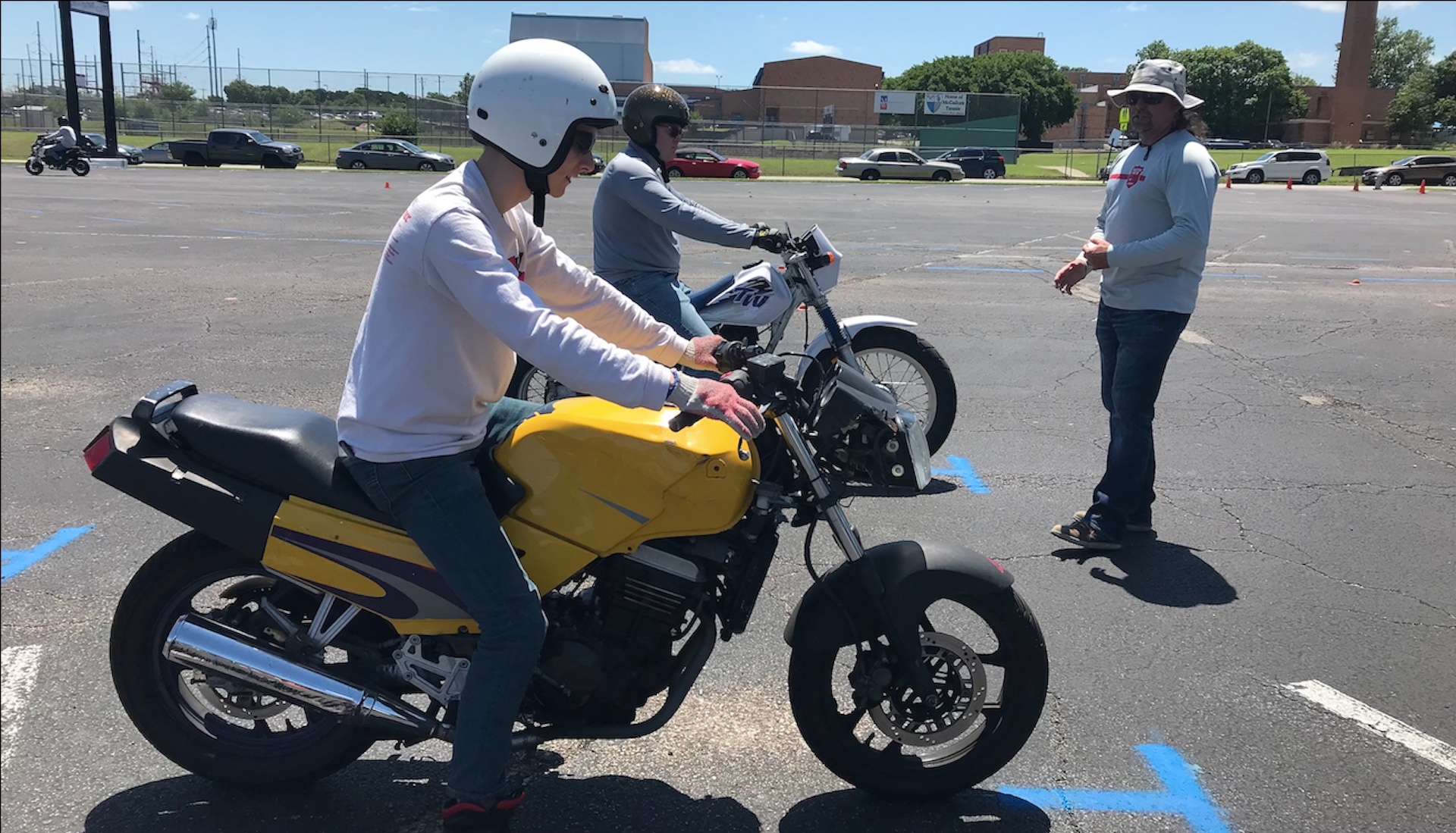

We may earn revenue from the products available on this page and participate in affiliate programs. Learn more ›
When exploring ranchlands of west Texas on foot, one can’t carelessly wear flip-flops or aimlessly wander through the tall grasses. You’ve got to don sturdy, snakebite-repelling boots and look ahead to make sure you don’t step into a rattler’s nest. This is hard land, y’all, so chin up and look alive. In many ways, that proactive and defensive mindset is much like driving a car—or even more so—riding a motorcycle.
I wanted to get my motorcycle license when I was in college. I excitedly told my mother that I was going to buy one and solve all of my transportation challenges, and she casually mentioned that if I got a motorcycle I’d also have to take over my tuition payments. That put the kibosh on my two-wheeled dreams.
Fast forward a few decades, and I finally took the basic rider course last May. (Somebody give me a gold star for my bucket list, please.) Now that I’m (ostensibly) a grown-up, I understand my mother’s trepidation about motorcycles. On the other hand, I submit that taking a moto safety class would help a whole lot of new teenage drivers to be more aware and alert on the road and we would all be a little safer.

According to the Motorcycle Legal Foundation, riders that operate a motorcycle without a Class M endorsement (a license to ride a motorcycle) are referred to as “riding dirty.” Fact: you can get motorcycle insurance without a license. According to the Texas A&M Transportation Institute, in 2018, unlicensed riders accounted for 46 percent of rider fatalities in Texas. Taking the course teaches you the basics and gets you a license, which improves your chance of getting a better insurance rate anyway.
One of the first things the instructor teaches you in Basic Rider class is how to inspect the bike. They use the Motorcycle Safety Foundation’s acronym T-CLOCS to help you remember to check out your motorcycle every time you go out for a ride:
T: Tires and wheels
C: Controls (levers, pedal, cables, hoses, and throttle)
L: Lights (battery, headlights, turn signals, mirrors)
O: Oil fluid levels
C: Chassis (frame, suspension, chain)
S: Stands (center stand or kickstand)
Apply that methodology to driving a car and your teen driver will better understand how it works and will be less likely to get sidelined by a flat tire, busted taillight, or low oil levels.
The second benefit of learning how to drive a motorcycle is a reinforcement of the concept of the friction point. For all of the stomping of feet and gnashing of teeth about the death of manual transmissions, we’re forgetting something important: motorcycles still have a clutch and gears. And they’re fun to use.
In my class, I rode a trusty Honda Grom with gears that were a little finicky. Riding it around the course in the Dart Bowl parking lot helped me get a feel for gearing that translates to a manual transmission in a car, too.

There’s no time for messing around and no room for daydreaming on a motorcycle because no one else is looking out for you. My motorcycle instructor, Bryce, drilled one thing into the heads of each of us in the class: you have to ride like you’re invisible. Those words changed the way I drive forever.
As a result, after I got my motorcycle license I realized that I’m more aware of the cars around me. I’m listening and looking for other cars and bikes that could be in my blind spot or may be coming up fast behind me. I don’t trust my eyes or today’s high-tech cameras alone.
Young brains are still in the process of solidifying, so taking a course will set them on the right path. Teens will teen, so there are some that will still do stupid things like weaving in and out of traffic or driving with one hand because they think they look cool.
If they take a solid safety class—and the MSF has been perfecting the process for many years—they’ll emerge not only with a motorcycle license but a better understanding of the responsibility of driving a motor vehicle of any kind.
After all, you don’t have to buy them a motorcycle. You’re just giving them the opportunity to save a motorcyclist’s life with a little vigilance on the road.
Got a tip? Send us a note: tips@thedrive.com
